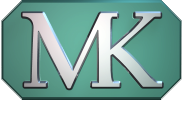California Supreme Court creates product line exception in 1977 by holding the buyer of the assets of a ladder maker responsible for the post-closing injury of a person caused by the seller’s defective ladder made and sold before the closing.
M&A Stories
September 23, 2021
Introduction:
Buyers are usually not held liable for the seller’s pre-existing liabilities when acquiring a business’s assets, especially in all-cash transactions at fair market value. However, there are exceptions to this rule in some states. One such exception, known as the product line exception, was established by the California Supreme Court in 1977.
The Deal:
In this particular case, a buyer purchased all the operational assets of a ladder manufacturer, including the plant, equipment, goodwill, customers, and intellectual property, through an all-cash transaction at fair market value. The buyer continued to operate the business as before, using the same employees, management, and tradename. Meanwhile, the seller, a California corporation, disbursed its assets and net proceeds from the sale to its owners, and then dissolved after two months, as stipulated in the purchase agreement.
The Lawsuit:
Six months after the acquisition, a person suffered an injury due to a defective ladder made and sold by the seller before the purchase. The injured person filed a lawsuit against the buyer in a California state court.
The Ruling: Initially, the trial court ruled in favor of the buyer, stating they were not liable for the plaintiff’s injuries based on traditional successor liability rules. These rules involve assumptions of liabilities in cases of express or implied agreements, mergers or consolidations, mere continuation of the seller’s business, or fraudulent transfer of assets to evade debts.
However, the California Supreme Court introduced the “product line exception” in this case. Under this exception, a buyer acquiring a manufacturing business and continuing to produce and sell the same line of products as the seller assumes strict tort liability for any defects in units of that product line manufactured and distributed by the seller in the past.
This case is referred to as Ray v. Alad Corp., 19 Cal.3d 22 (1977), 560 P.2d 3, 136 Cal. Rptr. 574, Supreme Court of California, (February 24, 1977) https://scholar.google.com/scholar_case?case=16480226776272933283&q=%22asset+purchase+agreement%22&hl=en&as_sdt=2006&as_ylo=1800&as_yhi=2017
Comment:
The product line exception has been adopted by several states, including New York, Pennsylvania, New Jersey, New Mexico, and Mississippi, besides California. When considering the purchase of a manufacturing business, it is essential to be aware of the potential application of the product line exception. This risk can be managed through insurance or by having the seller purchase a “tail policy” to cover any future liabilities related to the product line.
By John McCauley: I help people manage M&A legal risks.
Email: jmccauley@mk-law.com
Profile: http://www.martindale.com/John-B-McCauley/176725-lawyer.htm
Telephone: 714 273-6291
Check out my book: Buying Assets of a Small Business: Problems Taken From Recent Legal Battles
Legal Disclaimer
The blogs on this website are provided as a resource for general information for the public. The information on these web pages is not intended to serve as legal advice or as a guarantee, warranty or prediction regarding the outcome of any particular legal matter. The information on these web pages is subject to change at any time and may be incomplete and/or may contain errors. You should not rely on these pages without first consulting a qualified attorney.

Recent Comments